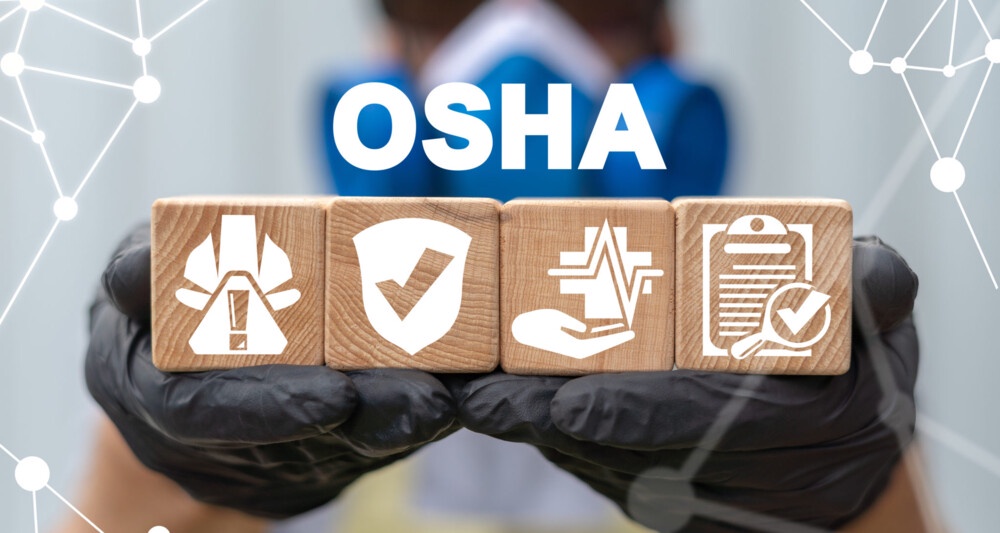Spray painting is a common method used in various industries for applying a coat of paint or protective coating to surfaces. While it may seem like a simple task, it can pose serious health hazards if proper precautions are not taken. One of the most significant risks associated with spray painting is respiratory hazards. In this article, we will discuss the importance of OSHA 30 hour Certification and how it can help prevent respiratory hazards from spray painting.
Understanding Respiratory Hazards from Spray Painting
Spray painting involves the use of a spray gun or aerosol can to apply paint or coating to a surface. This process creates a fine mist of paint particles that can easily be inhaled. These particles can irritate the respiratory system and cause various health issues, including:
- Irritation of the nose, throat, and lungs
- Asthma
- Bronchitis
- Lung cancer
- Chemical pneumonia
The severity of these health issues depends on the type of paint or coating being used, the ventilation in the work area, and the duration of exposure. It is essential to take necessary precautions to prevent respiratory hazards from spray painting.
Importance of OSHA 30 Hour Certification
OSHA (Occupational Safety and Health Administration) is a federal agency that sets and enforces safety standards in the workplace. OSHA 30 hour certification is a comprehensive training program that covers various safety topics, including respiratory hazards. This certification is designed for workers and supervisors who are responsible for safety compliance in the workplace.
Here are some reasons why OSHA 30 hour certification is crucial for preventing respiratory hazards from spray painting:
- Knowledge of Hazards: OSHA 30 hour certification provides workers and supervisors with a thorough understanding of respiratory hazards associated with spray painting. This knowledge helps them identify potential hazards and take necessary precautions to prevent them.
- Proper Use of Personal Protective Equipment (PPE): PPE is essential for protecting workers from respiratory hazards. OSHA 30 hour certification teaches workers how to use PPE correctly and when it is necessary to wear it.
- Safe Work Practices: The training program also covers safe work practices that can help prevent respiratory hazards. This includes proper ventilation, handling of hazardous materials, and emergency procedures.
- Compliance with OSHA Standards: OSHA 30 hour certification ensures that workers and supervisors are aware of OSHA standards and regulations related to respiratory hazards. This knowledge helps them comply with these standards and avoid penalties.
- Reduced Risk of Accidents and Injuries: By understanding the hazards and taking necessary precautions, workers and supervisors can reduce the risk of accidents and injuries in the workplace.
Preventing Respiratory Hazards from Spray Painting
Apart from OSHA 30 hour certification, there are several other measures that can help prevent respiratory hazards from spray painting. Here are some best practices that should be followed:
- Proper Ventilation: Adequate ventilation is crucial for preventing respiratory hazards. It helps remove harmful fumes and particles from the work area. If working indoors, make sure to use exhaust fans or open windows to allow fresh air to circulate.
- Use of Respirators: Respirators are essential for protecting workers from inhaling paint particles. Make sure to use the right type of respirator for the type of paint or coating being used. Also, ensure that the respirator fits correctly and is worn at all times during spray painting.
- Use of PPE: In addition to respirators, other PPE such as goggles, gloves, and coveralls should be used to protect workers from respiratory hazards. Make sure to use PPE that is appropriate for the type of paint or coating being used.
- Proper Handling of Hazardous Materials: Paints and coatings often contain hazardous materials that can pose respiratory hazards. Make sure to read the safety data sheet (SDS) for the product and follow the recommended safety precautions.
- Training and Supervision: Workers and supervisors should receive proper training on respiratory hazards and safe work practices. Supervisors should also monitor workers to ensure that they are following safety protocols.
- Regular Maintenance of Equipment: Spray painting equipment should be regularly inspected and maintained to ensure that it is in good working condition. Faulty equipment can increase the risk of respiratory hazards.
- Proper Disposal of Waste: Paint and coating waste should be disposed of correctly to prevent exposure to harmful chemicals. Follow the recommended disposal methods provided by the manufacturer.
OSHA Course in Pakistan
In Pakistan, the Occupational Safety and Health Administration (OSHA) has partnered with local organizations to provide OSHA 30 hour certification courses. These courses are designed to meet the safety standards set by OSHA and provide workers and supervisors with the necessary knowledge and skills to prevent respiratory hazards from spray painting.
Here are some of the key topics covered in an OSHA Course in Pakistan:
- Introduction to OSHA and its standards
- Hazard recognition and prevention
- Personal protective equipment (PPE)
- Respiratory hazards and protection
- Safe work practices for spray painting
- Emergency procedures
- OSHA recordkeeping and reporting
Conclusion
In conclusion, respiratory hazards from spray-painting can pose serious health risks to workers. It is essential to take necessary precautions to prevent these hazards. OSHA 30 hour certification is an effective way to educate workers and supervisors on respiratory hazards and how to prevent them. By following best practices and using the right safety measures, we can ensure a safe and healthy work environment for everyone.


No comments yet